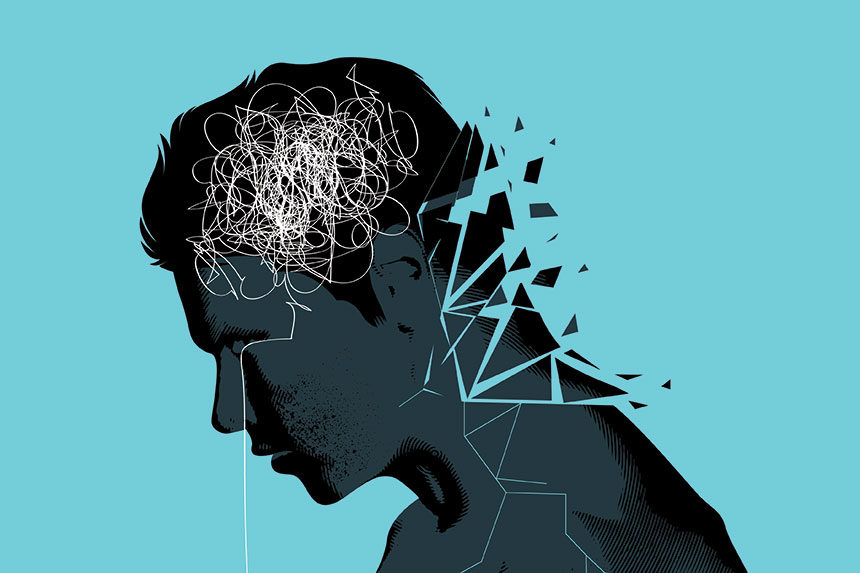SALT LAKE, Utah – When JayBee played basketball for the University of New Mexico, he was not a fan of Utah or, more precisely, the Utes. After he left the sport as a career, he wanted to find something else he was passionate about. When he spoke at a treatment center, he found that passion: mental health and helping those in need.
In 2017, he went to work for University Neuropsychiatric Institute (UNI), now known as Huntsman Mental Health Institute, as a psychiatric technician providing care to those with mental health and substance abuse needs. After working with youth at UNI, he then joined the receiving center, which opened in 2012. It is an integral part of Salt Lake Valley’s response to mental health crises. “We are serving the homeless and individuals in crisis,” JayBee says.
Kevin Curtis is the Huntsman Mental Health Institute (HMHI)’s crisis service director. He first encountered this model of mental health care as a graduate student in Phoenix. It’s built around several core concepts. The first is there’s no wrong door to receiving mental health care:
“People can walk in off the street, be referred by a provider in the community, or dropped off by the police who find them in crisis. People in mental health crisis should be able to receive care regardless of how they come to the attention of the system,” Curtis says.
The second concept is the recognition that while those in mental health crisis are initially dealt with by the police or in a hospital emergency setting, both of which have worked to develop expertise in addressing these issues, “If there’s a mental health crisis it should be immediately triaged in a mental health care environment,” Curtis says.
The receiving center can take six patients at any one time, although during the pandemic that has been reduced to four. The center, JayBee explains, “looks to help individuals in crisis. They can be dealing with a plethora of things: withdrawal, suicidal thoughts and ideation, a break-up, an overdose, stress from losing a job or needing some time to reset after being checked out at the emergency department.”
There are a variety of resources the receiving center can provide people in crisis, including outpatient services, talking with a social worker or being seen by a medical provider, or simply an opportunity to use the center as a haven for up to 23 hours, says JayBee. That might be no more than getting food, a shower and some clean clothes and having someone to talk to,
But the HMHI receiving center is on a small scale at its current size. “It’s fairly limited in scope in terms of meeting the major need of the community,” Curtis says. Before the pandemic, the receiving center managed about 140 client interventions each month, with roughly 30 people turned away each month due to lack of capacity to treat them.
In late May 2021, a groundbreaking ceremony launches the building of the Mental Health Crisis Care Center at the Huntsman Mental Health Institute Campus of Hope. The campus will be erected on a nine-acre lot at 3300 South and 1000 West, near the Salt Lake County jail and the South Salt Lake Men’s Resource Center, The Road Home.
“I think it will be a game-changer,” Curtis says. There will be 30 slots available to receive people in crisis, along with a number of long-stay beds too.
“As somebody who has dedicated his life to mental health access, I can’t underestimate the importance of this to our community,” Curtis says. “As somebody who has dedicated his life to mental health access, I can’t underestimate the importance of this to our community,” Curtis says. “To have a facility of this size with so few barriers to entry means we can now meet need in our community that’s gone unmet for so long.”
By having the new Crisis Care Center in a centralized location so close to the jail and the homeless center, those in crisis and those transporting them to receive care can get much quicker access to the resources they need.
When law enforcement encounters people with mental health problems committing acts of vagrancy or trespass, for example, Curtis hopes the police will bring them to the center rather than take them to jail. “Does this person go to jail or the Crisis Care Center?” Curtis asks hypothetically. “We’d love the Crisis Care Center to be the first option.”
General estimates put the percentage of those with mental health concerns in society at 4%, yet behind bars their presence in incarcerated populations is much higher. One recent study estimated American jails held 14.5% of men and 31% of women with serious mental health issues, while prisons held 6% to 14% for men and women.
JayBee is excited about the new facility. In some ways, working in treatment and care reminded him of sports. “You don’t make decisions independently. You work as a team,” he says. What he came to learn was, “You can’t help everyone, unfortunately, but the ones you do help, patient care makes an immense difference in their lives.”
By having the new Crisis Care Center in a centralized location so close to the jail and the homeless center, those in crisis and those transporting them to receive care can get much quicker access to the resources they need.
When law enforcement encounters people with mental health problems committing acts of vagrancy or trespass, for example, Curtis hopes the police will bring them to the center rather than take them to jail. “Does this person go to jail or the Crisis Care Center?” Curtis asks hypothetically. “We’d love the Crisis Care Center to be the first option.”
General estimates put the percentage of those with mental health concerns in society at 4%, yet behind bars their presence in incarcerated populations is much higher. One recent study estimated American jails held 14.5% of men and 31% of women with serious mental health issues, while prisons held 6% to 14% for men and women.
JayBee is excited about the new facility. In some ways, working in treatment and care reminded him of sports. “You don’t make decisions independently. You work as a team,” he says. What he came to learn was, “You can’t help everyone, unfortunately, but the ones you do help, patient care makes an immense difference in their lives.”






